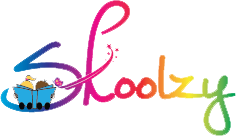Early Childhood Development: Speech & Language Skills
Posted by Amanda Jacobs on

Areas of Child Development: Speech & Language Skills
The development of speech and language refers to the skills children use to understand and communicate with others. Language development helps your child communicate what they want and how they feel. It also is crucial to their thought process; problem-solving, and forming relationships with others.
It is a critical part of child development and most of the foundations for language development are laid down in the first 12 months of your baby’s life and develop at a rapid rate, especially between the ages of 2-5. Most children will have learned the basics by age 6.
What’s the difference between speech and language?

Speech refers to the making of sounds that become words. At around 2 months, babies first start cooing, and at 6 months they generally start babbling - this is them learning how to make the sounds which will eventually form words. It’s the physical act of talking, even if we don’t understand what they’re saying!
Language, on the other hand, is the use of words (spoken or written) and gestures to communicate and understand others. Language refers to any form of communication, be it verbal, written or gestures/signing.
Your young child might not be forming full sentences yet, or even speaking coherently, but don't overlook their ability to communicate. They can communicate their emotions and feelings through sound, facial expressions, gestures and actions. Smiling, crying, shouting, laughing, throwing things, pointing, and even throwing tantrums are just a few ways they are attempting to communicate with you.
They are many ways you can help promote early language development.
Tips on how to build language skills:
- Talking to your baby on a regular basis in her language. This is sometimes referred to as parentese or motherse! It’s the high-pitched tone of voice in an exaggerated and repetitive way that resonates well with baby (and is how we probably speak anyway when talking with young babies)! It’s not the same as baby talk per se (which is making sounds like goo goo gaga) which is less engaging for babies and doesn’t promote the same language benefits.
- Naming commonly used objects and activities so they become familiar with everyday words,
- Singing and reading to your baby to attune their ears to different sounds. As they get older, point out pictures in the book and name them. Ask her where things are on the page, like “where’s the doggy?” and praise her when she points to it
- Responding to their sounds and gestures – if he raises his arms to be picked up – pick him up and say “you want to be picked up?” If he makes funny sounds, mimic his sounds – demonstrate to your baby that you appreciate and understand his attempts at communicating.
- Ask her questions, even if she can’t answer you back yet. Give her the choice of a couple of books to read and hold up both books and see how she responds – is she more drawn to one than the other, does she point to one? If so, say something like; “you want to read this one? Ok, let’s read it!”
Want to know more? Read our blog posts for more on the five main areas of child development. Also check out our handy printables outlining important developmental milestones for each stage.
